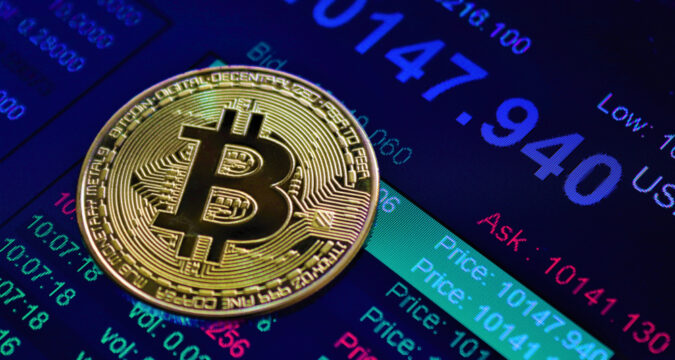
With the recent decline in confidence in banks across the US and Europe, many are on the lookout for a reliable alternative to safeguard their hard-earned money. And this is where Bitcoin comes in, as it was designed specifically for this purpose.
Its decentralized nature and independence from any controlling entity make it a powerful tool for anyone seeking to protect their wealth from the uncertainties of traditional banking systems.
Why More People are Turning Towards BTC
As the world struggles with economic instability and financial uncertainty, Bitcoin has emerged as a clear winner, with its value skyrocketing and gaining mainstream recognition like never before.
It’s no wonder that more and more people are turning to this innovative digital currency as a hedge against the weakening USD.
But while Bitcoin’s potential as a USD hedge is undeniable, its illiquidity remains a hindrance for some investors.
Nonetheless, the increasing adoption of Bitcoin as a legitimate form of currency, as well as the emergence of more user-friendly platforms and exchanges, suggests that the future is bright for this revolutionary technology.
Upon initial examination, the recent banking crisis would appear to be the ideal trigger for a significant surge in Bitcoin’s price. However, upon closer inspection, it becomes evident that the lack of liquidity has been a driving force behind this trend.
While the overall narrative linking the banking crisis and Bitcoin’s price rally is compelling and has undoubtedly led to a surge in interest in Bitcoin, the lack of liquidity has been a significant propellant of the price rise.
Despite this, BTC maximalists have reason to celebrate, as this is the moment for which Bitcoin was created. For the first time since its inception, there is a crisis of confidence in the traditional banking system, and Bitcoin has emerged as a viable alternative.
Illiquidity could be a Major Obstacle
It is crucial to note that while illiquidity may have propelled Bitcoin’s recent price movement, the lack of liquidity can also be a significant obstacle for investors seeking to enter and exit positions in the market.
In the wake of the recent economic crisis, many individuals are beginning to realize that the USD they hold is more vulnerable than they previously thought.
As a result, Bitcoin is now appearing as an attractive option to diversify a wider portfolio. However, while narratives that aim to explain or predict price movements can be compelling, it is important to consider the current market structure.
In financial markets with low liquidity, volatility tends to be higher in both directions, with prices having less support on both the downside and the upside.
In the case of Bitcoin’s recent price rally, the narrative of Bitcoin serving as a hedge against financial instability helped to propel its price upward.
However, there was relatively little resistance to overcome on the upside. Market depth for BTC, which represents the number of orders waiting to be filled on an order book, hit 10-month lows recently.
They dropped even lower than levels seen since the collapse of the FTX exchange and sister firm Alameda Research.
Despite this, the growing adoption of Bitcoin as a legitimate form of currency, as well as the emergence of more user-friendly platforms and exchanges, suggests that the future is bright for this revolutionary technology.
While there may be challenges to overcome, the potential for Bitcoin to serve as a reliable hedge against market volatility and financial insecurity is undeniable.
As more individuals begin to recognize this potential, Bitcoin is likely to continue playing a significant role in the financial landscape for years to come.
Final Thoughts
It’s important to note that while the rotation of capital into BTC makes sense given the recent challenges in traditional markets, illiquidity has arguably played the largest role in the cryptocurrency’s surge.
As a result, it’s too early for a bitcoin maxi victory lap, and market participants need to remain vigilant and adaptable in the face of ongoing challenges and volatility.




